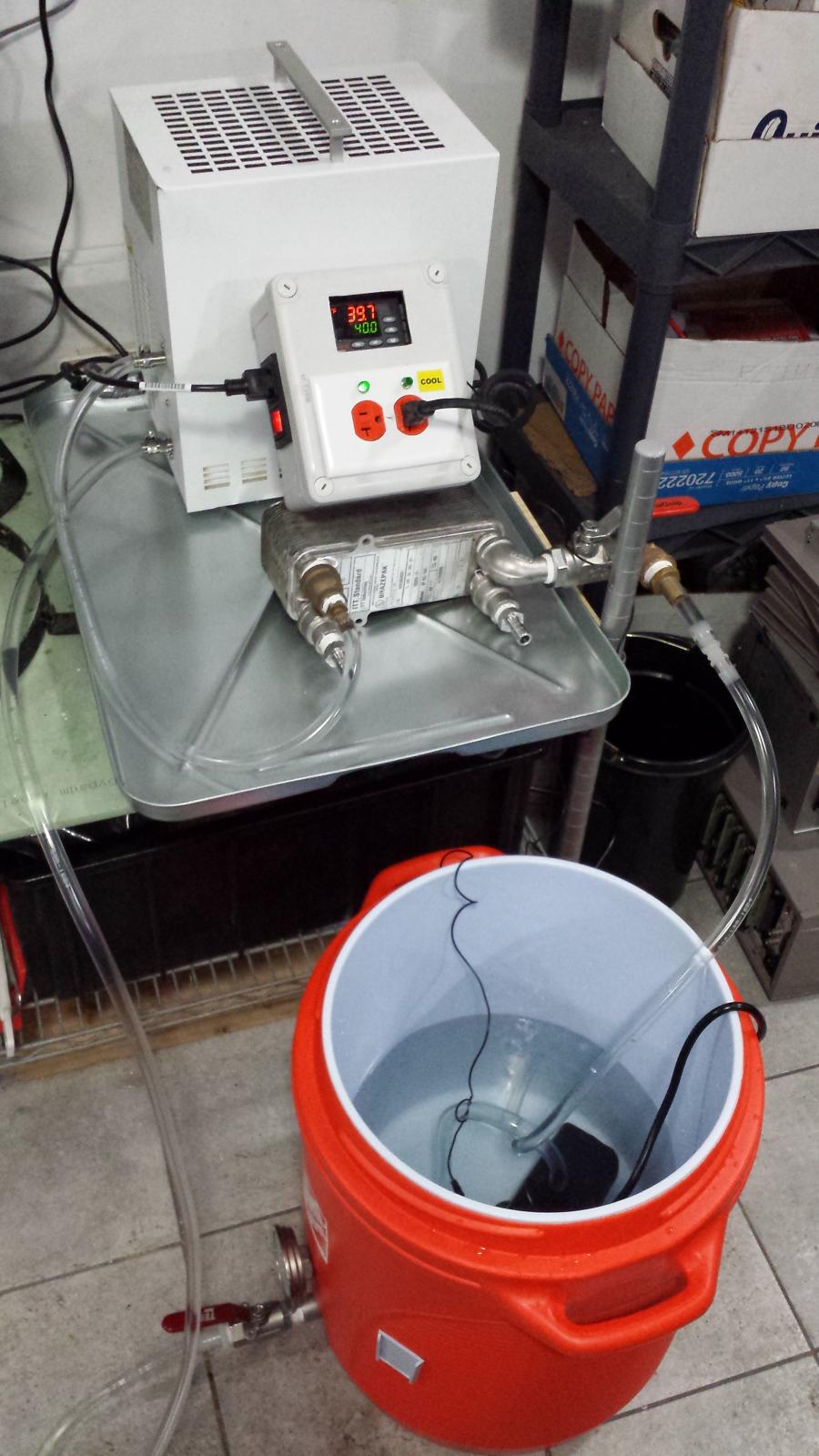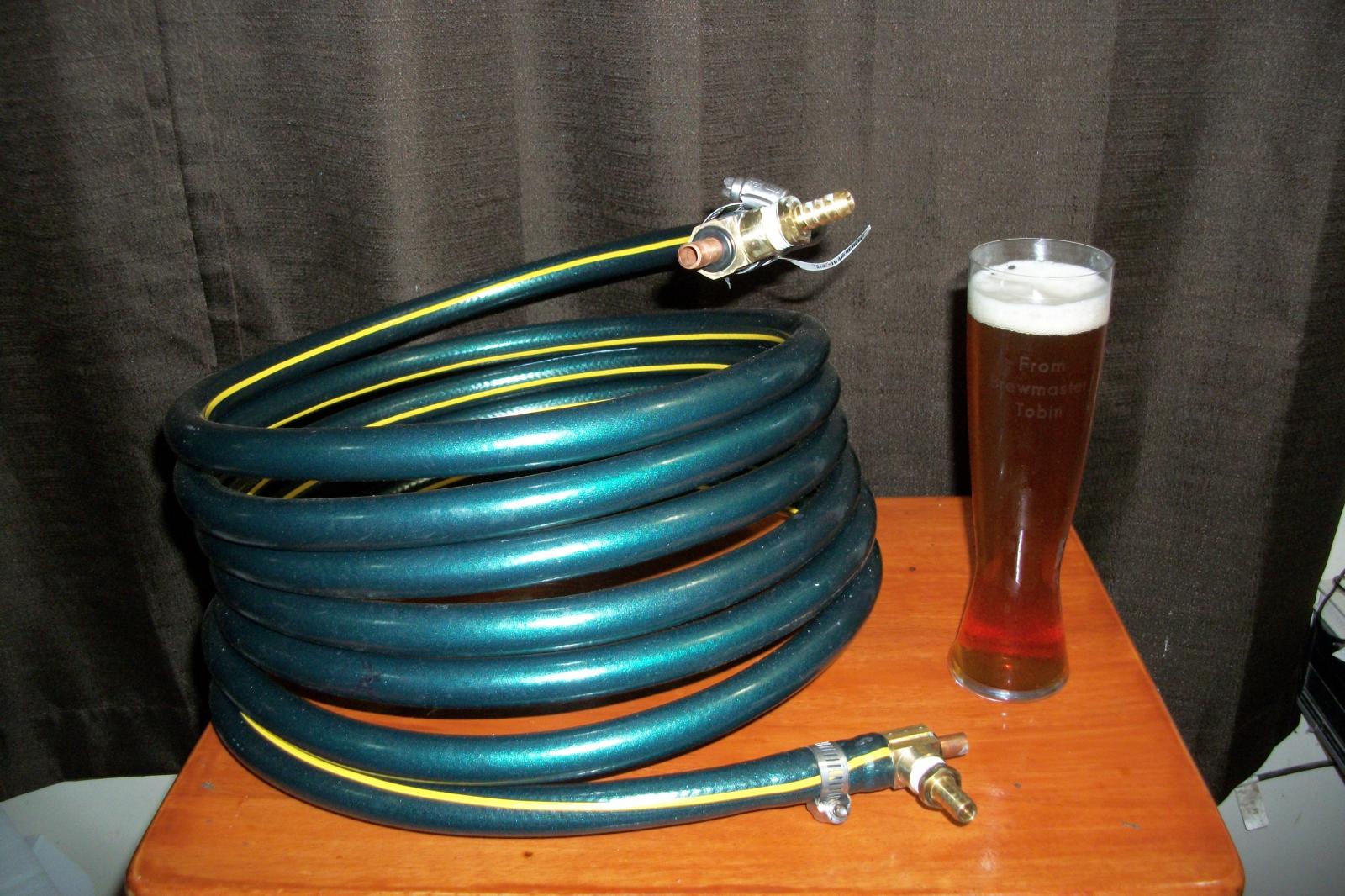I just completed and did a trial run of my recirculating wort chilling system and it works like a charm. So, what did I do?
I previously used a plate heat exchanger to instantaneously cool boiling wort by running city water via garden hose connections to my heat exchanger. This, however, wasted a lot of water down the drain. I needed to run the water at full blast, probably around 10 gpm for at least 20 minutes to cool my 5 gallon batch to 65 F for yeast pitching. That is 200 gallons of water for one batch. Well, where I live, water has gotten quite expensive lately, and I was able to get a Neslab FTC-350 Through Flow Cooler for free, so I figured I will make a wort cooling system by recirculating and cooling 5 gallons of water instead of dumping 200 gallons down the drain for each batch.
Neslab FTC-350 is really just a lab sized miniature refrigerator that requires a pump to work. I got a 10 gpm pond pump on Amazon, and connected it inside my water tank to pump out the water. The water tank is temporarily my 10-gallon mash tun, as I am currently doing extract batches because of time constraints (small kids).
The system recirculates the water by pumping out from the tank to the little refrigerated cooler, from the cooler to the plate chiller and back to the tank. The other side of the plate chiller is off course boiling wort.
One more thing that I added is the temperature controller that measures temperature inside the tank and turns the refrigerated cooler compressor on and off based on the set point while continuously keeping the pump running. This prevents freezing over of chilled water.
So, the system works great. I adjust the wort flow via manual valves on the boil kettle and the heat exchanger and the water flow via an adjustment knob on the pump. This keeps recirculating the cold water while cooling wort to optimal pitching temperature. No more wasting water for my beer.

I previously used a plate heat exchanger to instantaneously cool boiling wort by running city water via garden hose connections to my heat exchanger. This, however, wasted a lot of water down the drain. I needed to run the water at full blast, probably around 10 gpm for at least 20 minutes to cool my 5 gallon batch to 65 F for yeast pitching. That is 200 gallons of water for one batch. Well, where I live, water has gotten quite expensive lately, and I was able to get a Neslab FTC-350 Through Flow Cooler for free, so I figured I will make a wort cooling system by recirculating and cooling 5 gallons of water instead of dumping 200 gallons down the drain for each batch.
Neslab FTC-350 is really just a lab sized miniature refrigerator that requires a pump to work. I got a 10 gpm pond pump on Amazon, and connected it inside my water tank to pump out the water. The water tank is temporarily my 10-gallon mash tun, as I am currently doing extract batches because of time constraints (small kids).
The system recirculates the water by pumping out from the tank to the little refrigerated cooler, from the cooler to the plate chiller and back to the tank. The other side of the plate chiller is off course boiling wort.
One more thing that I added is the temperature controller that measures temperature inside the tank and turns the refrigerated cooler compressor on and off based on the set point while continuously keeping the pump running. This prevents freezing over of chilled water.
So, the system works great. I adjust the wort flow via manual valves on the boil kettle and the heat exchanger and the water flow via an adjustment knob on the pump. This keeps recirculating the cold water while cooling wort to optimal pitching temperature. No more wasting water for my beer.




